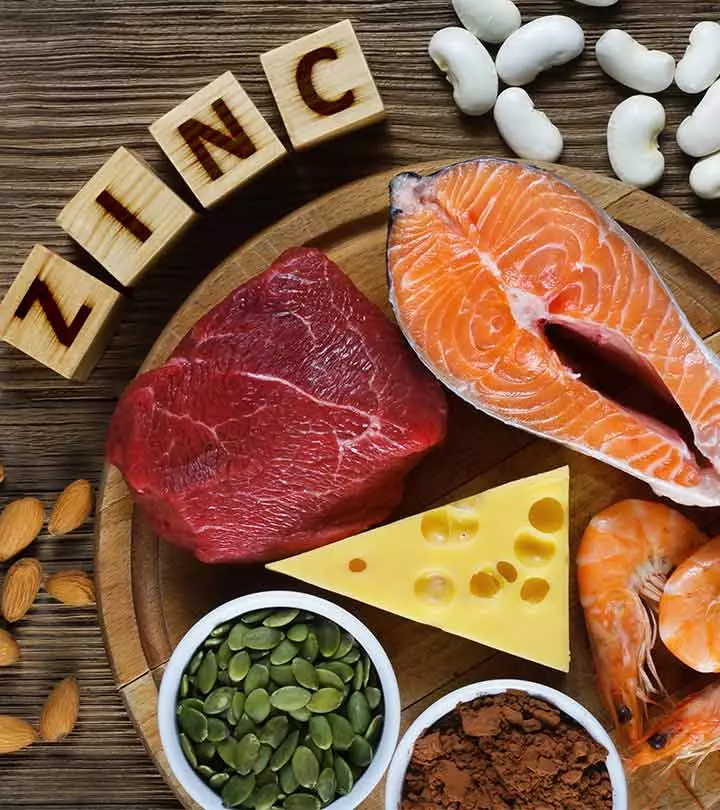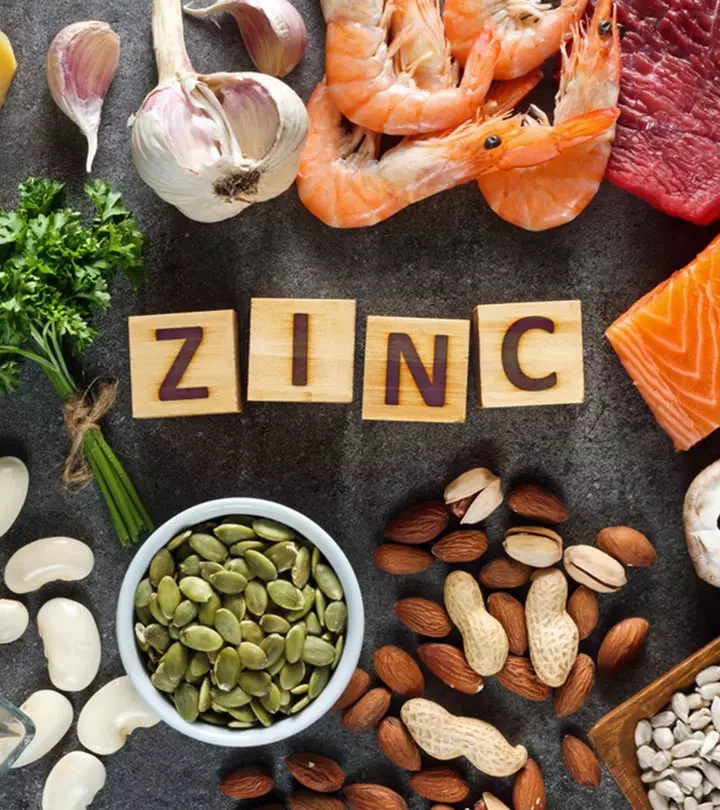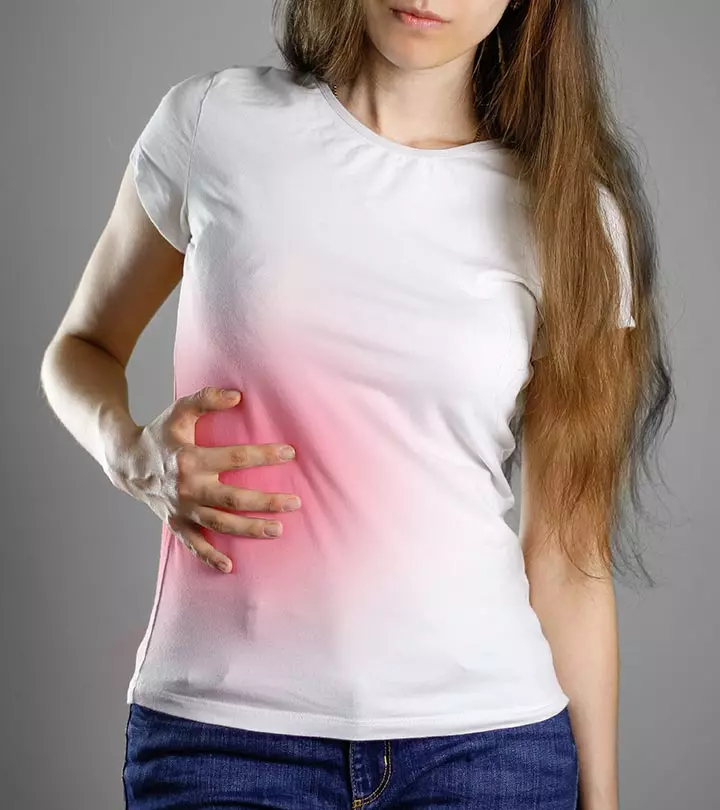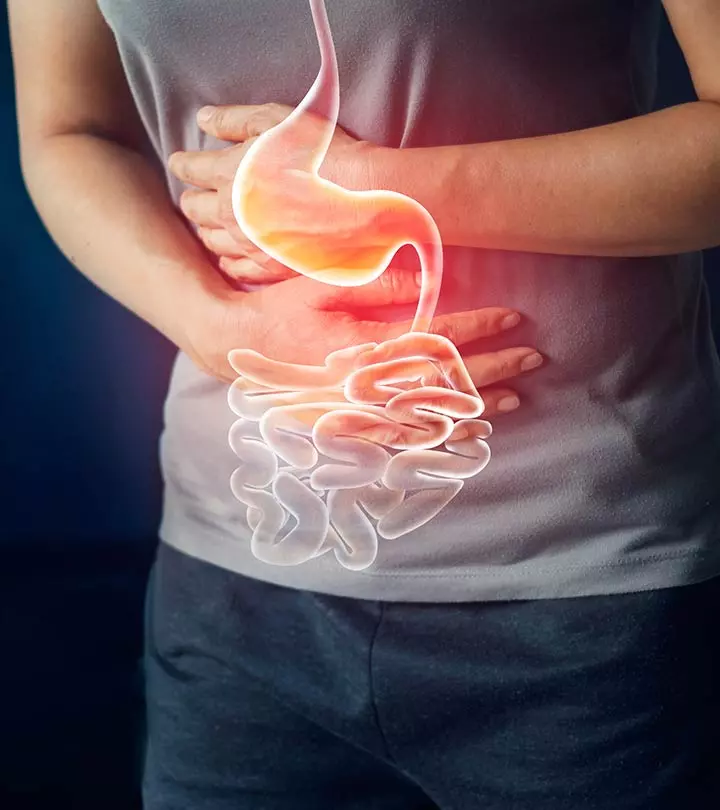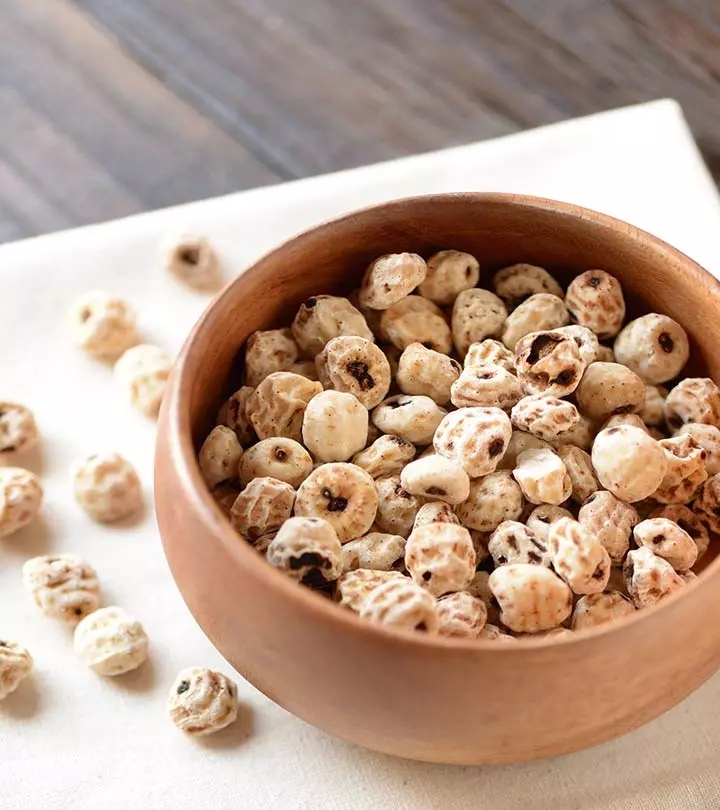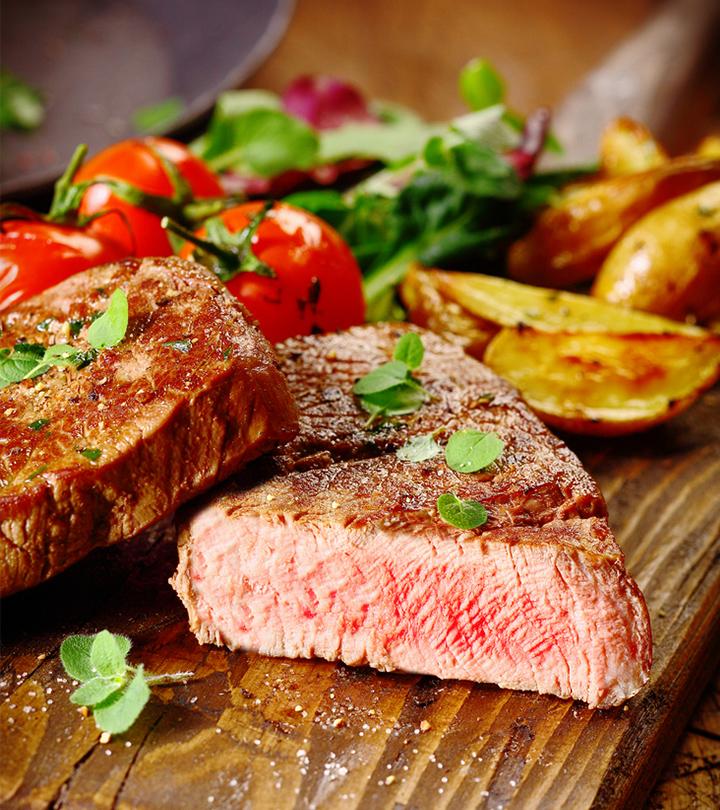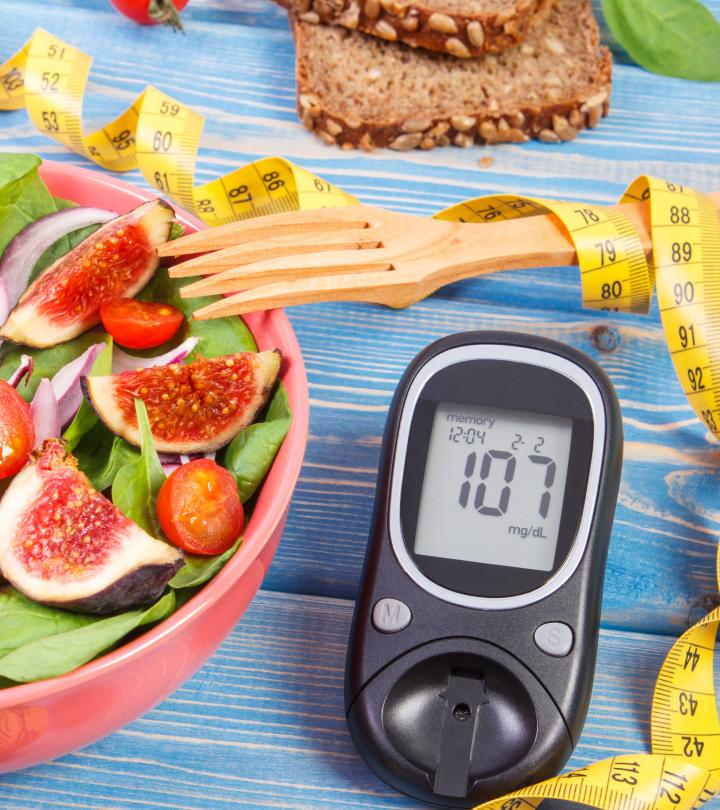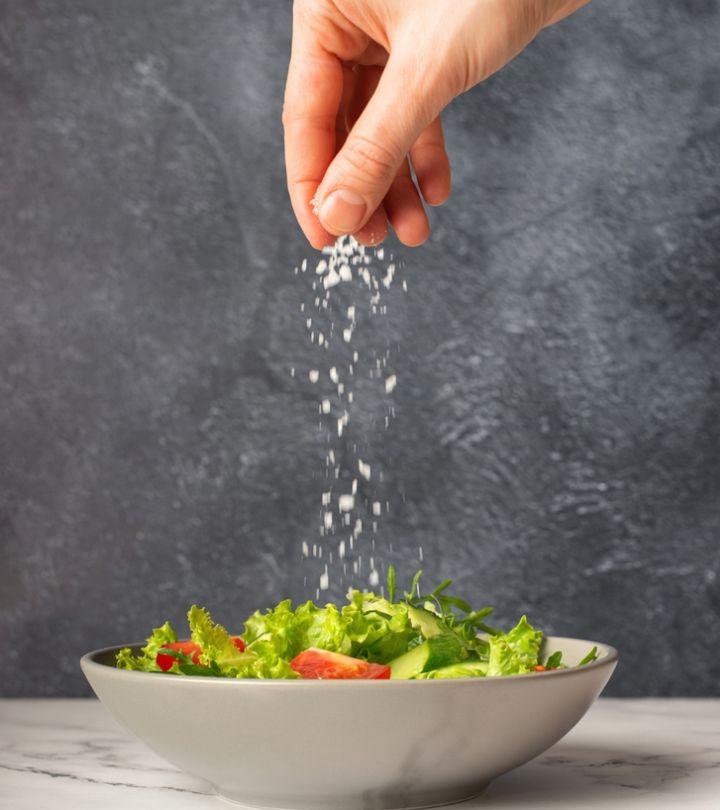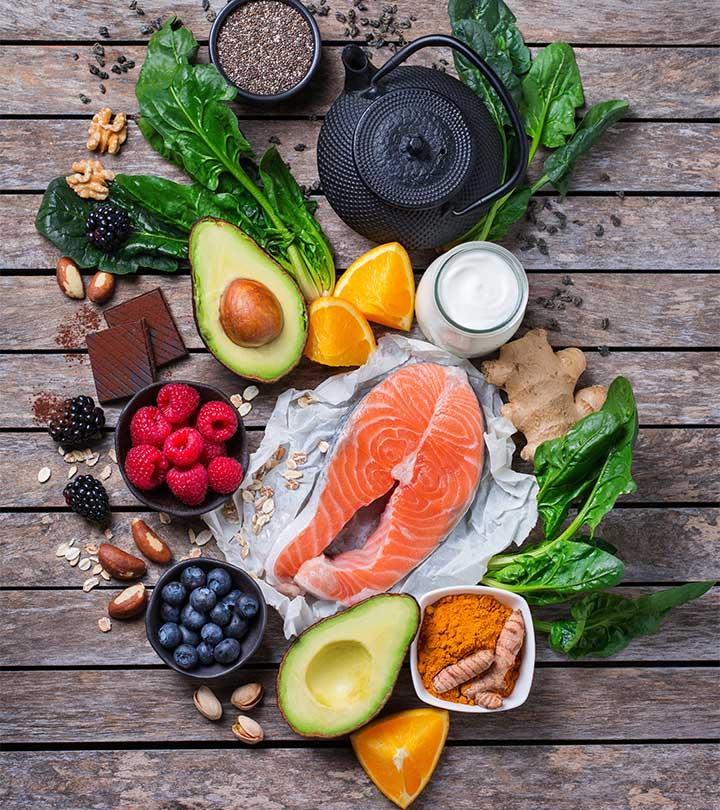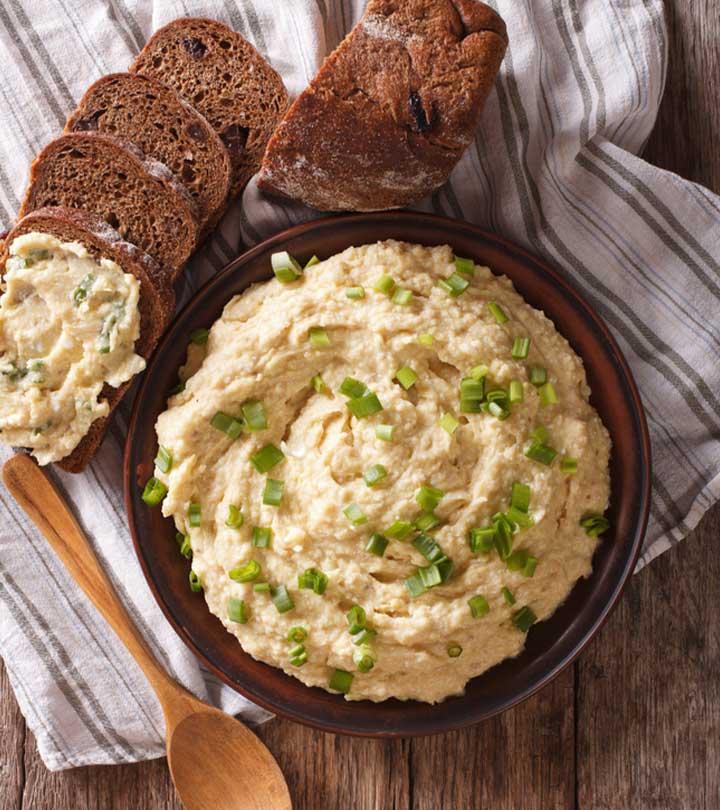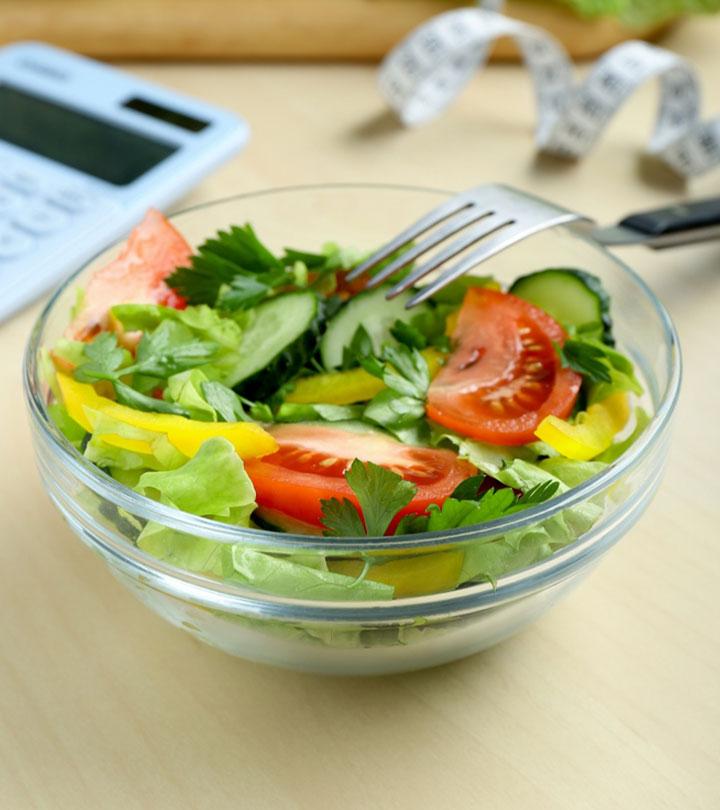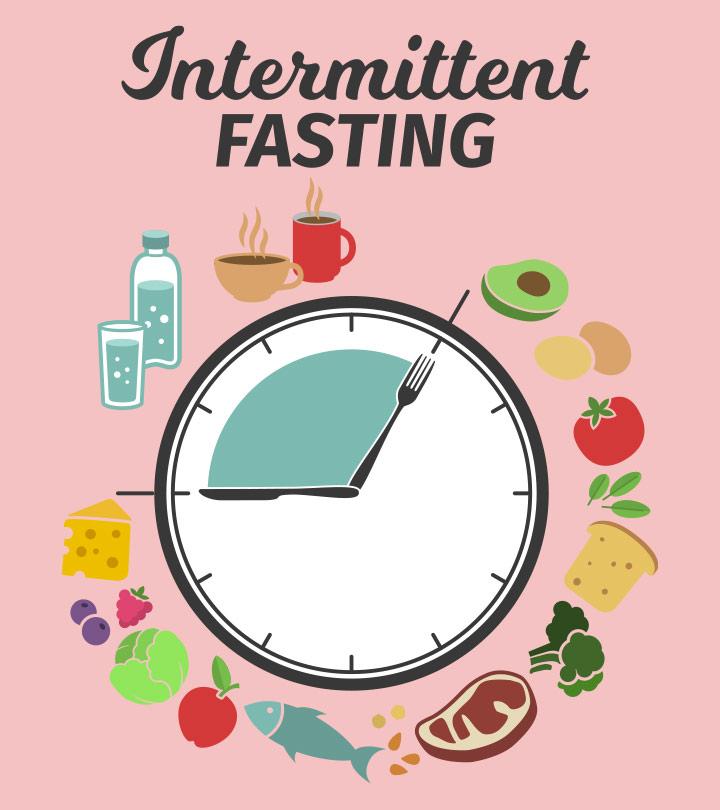Elemental Diet: What It Is, Benefits And Side Effects, And Foods To Eat
Liquid meals to give your intestines a break.
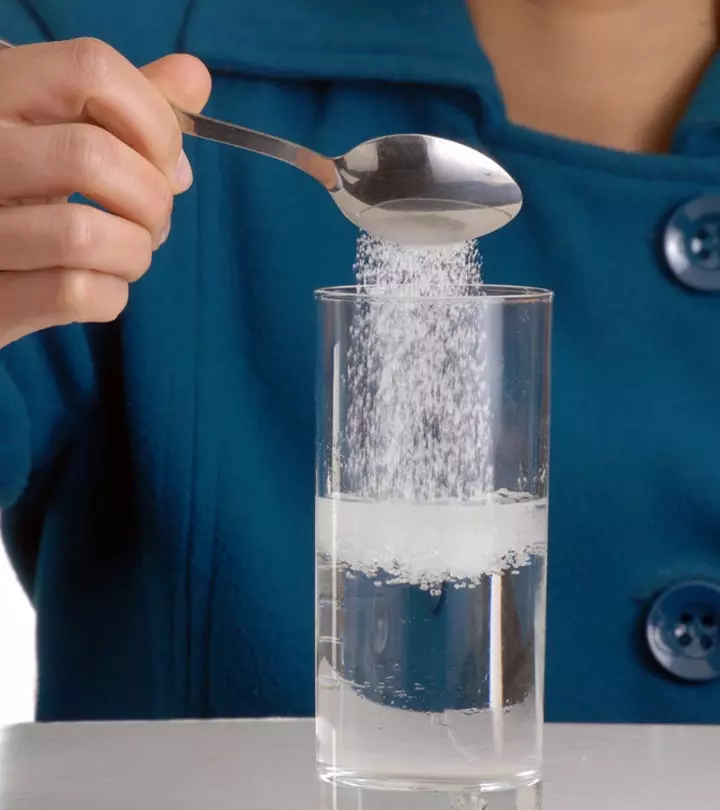
Image: Shutterstock
The elemental diet is beneficial for people with gastrointestinal issues. It is a medically prescribed protocol that comes in the “predigested” form to reduce the load on the intestines. It helps manage conditions like Irritable Bowel Disease (IBD) and Small Intestinal Bacterial Overgrowth (SIBO). These disorders disrupt the natural gut function and hinder food breakdown and nutrient absorption. The elemental diet not only reduces the load on the gut but also allows it some time to heal.
This article covers the fundamentals of the elemental diet, its benefits, and some essential tips to get you started. Continue reading to learn more.
 At A Glance: Elemental Diet
At A Glance: Elemental Diet- Principle: A liquid-based diet broken down into amino acids, carbohydrates, fats, and vitamins
- Purpose: To reduce the digestive load on the intestines, eliminate inflammatory triggers, and heal the gut
- Who It Is For: Those with inflammatory disorders such as SIBO, IBD, EoE, etc.
- Duration: 3-4 weeks
- Who Should Avoid: Those who are severely underweight should avoid it or follow it under medical supervision.
- Cons: Weight loss and diarrhea
In This Article
What Is An Elemental Diet?
The elemental diet comes in liquid form as a replacement for regular meals. This diet is broken down into the most basic or “elemental” forms of foods for easy digestion and absorption of nutrients. The elements of this diet include essential and non-essential amino acids, fatty acids, carbohydrates, and vitamins (1).
The prescription and non-prescription formulas of this diet are easily available on the market. The formulas are also available in powder form that can be mixed with water and consumed. The elemental diet is fed through oral or enteral administrationi Administration of nutrients directly into the gastrointestinal tract, often through a feeding tube .
How Does An Elemental Diet Work?
People on elemental diets only consume the prescribed formula and no solid foods. Other foods allowed on the diet include plain tea (without sugar) and water (2).
The diet works by starving the overgrowth of gut bacteria and helps heal any inflammation or damage. It also allows an individual to adequately get nutrients from food. An elemental diet can last up to 4 weeks until the digestive health improves (2), (3).
Post remission, you can gradually reintroduce other foods depending on your tolerance (4). But should you experience any allergies, avoid the specific food and reintroduce it again after a couple of weeks (2). This reintroduction phase involves a lot of trial and error that demands patience (5).
 Pro Tip
Pro TipThis diet is widely used for managing various digestion or gut-related disorders. The next section covers some of these common health conditions that an elemental diet can help treat.
Conditions The Elemental Diet May Help Treat
The elemental diet is recommended for the following health conditions:
- Small Intestinal Bacterial Overgrowth (SIBO)
SIBO is a condition caused by the overgrowth of bacteria in the small intestine. It causes bloating, diarrhea, and abdominal discomfort. An elemental diet, along with the necessary antibiotics, may help treat SIBO more effectively than other diet therapies (6).
- Inflammatory Bowel Disease (IBD)
A 4-week elemental diet was found to help decrease gut inflammation in patients with Crohn’s disease (7). In yet another study, over 80% of the patients who followed the diet saw improvement in their condition in 2 to 3 weeks (5).
- Irritable Bowel Syndrome (IBS)
Individuals with IBS often experience gastrointestinal discomfort and foul breath due to bacterial overgrowth. The exclusive use of the elemental diet for 2 to 3 weeks may possibly help normalize the bacterial levels in the small intestine (8).
- Celiac Disease
Celiac disease is an autoimmune disorder characterized by an intolerance to gluten, a protein found in wheat, barley, and rye. A gluten-free elemental diet may help manage this condition in some cases (9).
- Eosinophilic Esophagitis (EoE)
EoE is an allergic condition that can cause esophageal inflammation and make swallowing food difficult. No milk or milk derivatives are allowed in such cases. A study published by the journal Frontiers notes that diet therapies like the elemental diet have success rates higher than 90% when compared to other elimination diets (2), (4).
- Arthritis
In a study, excluding meat, dairy products, and cereals from one’s diet while on the elemental diet for two weeks significantly improved the symptoms of arthritis (10).
- Chronic Pancreatitis
This is a long-term inflammation of the pancreas that can lead to impaired digestion, abdominal pain, weight loss, and other digestive problems. A low-fat elemental diet may help alleviate pain in chronic pancreatitis (11).
- Radiation Enteritis
This is inflammation of the intestines that can occur as a side effect of cancer radiation therapy, when radiation is delivered to the abdominal or pelvic region. It may cause diarrhea, abdominal pain, and malabsorptioni Impaired absorption of nutrients in the digestive system that leads to nutrient deficiencies of nutrients. An elemental diet is shown to improve diarrhea and reduce the risks of radiation enteritis (12).
- Food Allergies And Intolerance
While food allergies involve the immune system’s response to specific allergenic proteins, intolerances result from difficulty digesting or processing certain food components like lactose. A hypoallergenic elemental diet helps eliminate the food allergens. However, it is only reserved for serious cases where even hydrolysate milk formulasi Formulas made by breaking down milk proteins into smaller and easier-to-digest components, which are ideal for infants with cow milk allergy are ineffective (13).
- Ulcerative Colitis
It is marked by chronic inflammation in the colon and rectum. In a study done on 13 patients who had tried the elemental diet for ulcerative colitis, 6 remained in remission for 7-28 months while only 3 experienced a mild recurrence after 4-24 months. The remaining 4 had to undergo surgery due to severe symptoms (14). Hence, the elemental diet may be beneficial in some cases of this disease.
An elemental diet can be a promising therapeutic option for patients with gastrointestinal disorders. Learn about its health benefits in the following section.
Benefits Of The Elemental Diet
- Provides Nutritional Support
Elemental formulas are designed to provide all the essential nutrients in a highly digestible form when the intestines are not able to metabolize food properly. This approach promotes better nutrient absorption.
- Allows Your Gastrointestinal System To Rest
The diet offers your digestive system a break from digesting complex fats, carbohydrates, and fibers. This is especially beneficial for conditions like Inflammatory Bowel Disease (IBD) or acute flare-ups.
- Provides Relief From Symptoms
An elemental diet can combat dietary triggers that may cause allergies or flare-ups. This can help decrease inflammation and offer the gut enough time to recover.
Reduction in C-reactive protein after elemental diet (10 April 2018–17 June 21)
Source: https://www.mdpi.com/2624-5647/3/3/14#B24-gastrointestdisord-03-00014An elemental diet is typically followed in the short run only. Keep reading to find out what foods you can include in the diet.
Foods To Eat On The Elemental Diet
People on the elemental diet do not consume any solid foods. They solely rely on predigested liquid elemental diet formulas for four weeks or as long as required.
Once they enter remission, the patients can start reintroducing less-triggering foods into their diet every 5 to 7 days as long as they do not experience adverse effects (4). However, more research is needed to define a standard diet that can be reintroduced after the elemental diet therapy (15).
A diet low in fat and fiber, often referred to as the LOFFLEX diet, is shown to effectively alleviate digestive issues. In a study, adhering to a low-fat and low-fiber diet helped 60% of the patients recover from their medical condition after two years (5). A low-fat diet is also found to better help treat Crohn’s disease than a high-fat diet (16).
You may consume these low-fat and low-fiber foods after the elemental diet (17):
Fruits
- Cantaloupe
- Grapes
- Honeydew melon
- Pineapple
- Sweet cherries
- Watermelon
Vegetables
- Cucumber
- Green onion
- Iceberg lettuce
- Leaf lettuce
- Mushrooms
- Radishes
- Tomatoes
While these foods can prove to be highly beneficial, certain other foods must be carefully reintroduced or avoided. Learn about them in the next section.
Foods To Avoid On The Elemental Diet
Several foods may trigger gut issues in conditions like Small Intestinal Bacterial Overgrowth (SIBO) and are better avoided. These include the following (4):
- Soy
- Legumes
- Peanuts or tree nuts
- Milk or milk derivatives
- Wheat
- Seafood
- Eggs
The elemental diet contains foods in their most fundamental forms to help prevent digestive complications. Scroll down to learn about the diet’s basic ingredients.
Elemental Diet Formulas
Elemental diet formulas include foods broken down into simpler compounds for easy digestion. These could be (18):
- Amino Acids
They are the primary source of protein in the simplest form.
- Carbohydrates
Simple carbs such as honey or dextrose are given for energy.
- Fats
Essential fatty acids such as medium-chain triglycerides are included to provide calories (oils of coconut, macadamia, cod liver, or olive).
- Vitamins And Minerals
Elemental formulas are fortified with vitamins and minerals to supply the necessary micronutrients.
- Electrolytes
Elemental formulas also may include sodium and chloride to help maintain electrolyte balance.
- Water
Water is a major component of elemental formulas to ensure they are in liquid form and ready for consumption.
- Flavors And Sweeteners
Some elemental formulas include flavorings and sweeteners to make them more palatable, especially for patients who need to consume them for extended periods.
Note that elemental diet formulas are prescribed under medical supervision for specific medical conditions like gastrointestinal disorders or malabsorption issues. Consult an expert or registered dietitian for guidance on which elemental formula is appropriate for your condition.
You may also use packaged elemental formulas available on the market. Read the next section to learn more about one such formula.
Tips For Using The Physicians’ Elemental Diet
The Physicians’ Elemental Diet is a medical food that is meant to be taken orally in liquid form. It helps manage gastrointestinal issues (19).
Directions Of Use
- Mix one heaping scoop (36 g) with 4-8 oz. (118 – 236 mL) of room temperature water.
- You can add more water if needed.
- Drink it slowly over 15 to 60 minutes.
- Refrigerate any unused mixture for up to 24 hours and stir before consuming.
- Store the powder at room temperature and in a dry place after opening.
Important
- This product is for medical use only and should be taken under medical supervision. It is not meant for children.
- It’s a powdered formula with 150 calories per serving. It also includes 24% fat, 67% carbs, and amino acids (equal to 9% protein).
An elemental diet shows the best results when you strictly adhere to it. There are many other formulas you can prepare at home. Check out the recipes for some easy-to-make elemental diet formulas in the next section.
Easy Elemental Diet Recipes
1. Elemental Liquid Diet-1
Ingredients
- 2 tablespoons of amino acids
- 5 tablespoons of dextrose
- 5 tablespoons of oil (coconut or olive)
- 2 capsules of multivitamin (open capsules to squeeze content)
- ¼ – ½ teaspoon of salt
How To Prepare
- Mix all the ingredients in a blender with water (as per your preferred thickness).
2. Elemental Liquid Diet-2
Ingredients
- 5 tablespoons of amino acids
- 5 tablespoons of dextrose
- 3 tablespoons of oil (coconut)
- 2 capsules of multivitamin
- ¼ – ½ teaspoon of salt
How To Prepare
- Mix all the ingredients in a blender or shaker with water (as per your preferred thickness).
Although this diet yields great results, one cannot overlook its downsides. Continue reading to learn why this diet should only be followed in the short run.
The Downsides Of The Elemental Diet
- May Feel Repetitive
You may experience boredom or aversion to the liquid diet due to the lack of complex flavors. It is essentially drinking almost the same thing for all your meals.
- May Not Be Sustainable
You may find it difficult to adhere to it given its restrictive nature.
- May Lead To Sudden Weight Loss
Research notes an average weight loss of up to 1.4 kgs within 4 weeks of following this diet. The weight loss may range from 3 to 7 kilos, or even more, in certain cases (2). This drastic weight loss may not be healthy for all.
 Did You Know?
Did You Know?Considering the benefits and downsides of this diet, only stick to personalized recommendations when making any dietary changes. Check out the next section to see who should avoid an elemental diet.
Who Should Not Go On The Elemental Diet?
- People With Diabetes
People with diabetes should avoid an elemental diet as it is devoid of fiber and is high in carbs and sugars. This specific composition can lead to sudden sugar spikes (21).
- People Trying To Lose Weight
The elemental diet is a therapeutic diet meant to treat digestive tract disorders, and may result in some weight loss. However, it is not specifically designed for weight loss and must not be considered for that purpose.
Avoid this diet unless it has been prescribed to you by a healthcare professional.
Karin Littleton, a nutritionist and health coach, says, “This diet is strictly for individuals who have received a specific diagnosis from their healthcare provider. It’s tailored to particular medical conditions and not recommended by health professionals without substantial cause. Always consult with a qualified medical practitioner before starting this diet, as it’s not suitable for everyone.”
The elemental diet can be a crucial therapeutic tool for managing a range of gastrointestinal disorders. This liquid-based diet contains predigested essential nutrients that improve the symptoms of Small Intestinal Bacterial Overgrowth (SIBO), Inflammatory Bowel Disease (IBD), and other gut issues. It can be consumed orally or administered enterally. The success rate of the elemental diet shows that it can be effective for many. However, it is advisable to take it only under medical supervision for a set duration to manage its challenges and side effects.
Frequently Asked Questions
Can I make my own elemental diet?
Yes, you can make your own elemental diet with the right ingredients. However, it’s important to consult a healthcare professional for guidance.
How long can I stay on the elemental diet?
An elemental diet is usually a short-term diet that lasts up to 3-4 weeks.
Does an elemental diet heal a leaky gut?
Possibly. According to a study, an elemental diet may help heal intestinal barrier function in Crohn’s disease (22). It also may help improve gut permeability in leaky gut.
Can I drink coffee on an elemental diet?
You may drink it if it is allowed by your physician, as coffee may irritate your gut.
Should I take probiotics while on an elemental diet?
Taking probiotics with an elemental diet in conditions such as SIBO may prove to be counterintuitive (23). However, more research is needed in this regard.
Is it normal to have diarrhea on the elemental diet?
Yes. An elemental diet can often lead to diarrhea. But this can be controlled by increasing the concentration of the diet or using antidiarrheal drugs (7).
Key Takeaways
- The elemental diet is a liquid-based diet meant for treating gastrointestinal issues like SIBO and IBD.
- While making your own elemental diet is possible, it is advisable to consult a healthcare professional for guidance.
- The diet is typically short-term and lasts for 3 to 4 weeks.
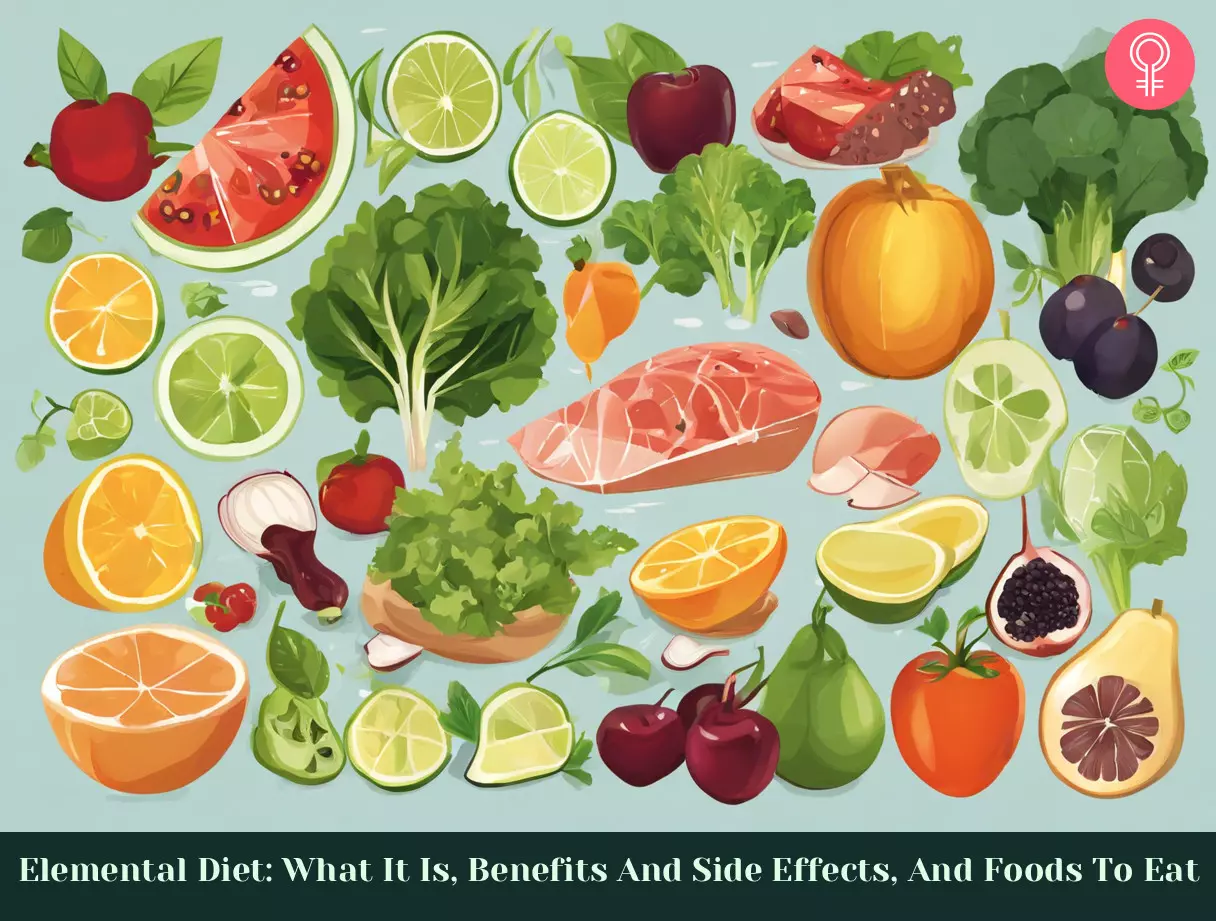
Image: Stable Diffusion/StyleCraze Design Team
The Physicians’ Elemental Diet is a prescribed food that is often typically consumed by patients with conditions such as IBD, IBS, and SIBO. The following video contains details about this predigested meal and how it can be effective for gastrointestinal issues. Hit the play button to learn more!
References
Articles on StyleCraze are backed by verified information from peer-reviewed and academic research papers, reputed organizations, research institutions, and medical associations to ensure accuracy and relevance. Read our editorial policy to learn more.
- An elemental diet is effective in the management of diversion colitis
https://www.ncbi.nlm.nih.gov/pmc/articles/PMC8035536/ - Elemental diet decreases inflammation and improves symptoms in adult eosinophilic oesophagitis patients
https://www.ncbi.nlm.nih.gov/pmc/articles/PMC5324627/ - Small intestinal bacterial overgrowth: Clinical features and therapeutic management
https://www.ncbi.nlm.nih.gov/pmc/articles/PMC6884350/ - Diet therapy in eosinophilic esophagitis. Focus on a personalized approach
https://www.frontiersin.org/articles/10.3389/fped.2021.820192/ - Elemental diet and the nutritional treatment of Crohn’s disease
https://www.ncbi.nlm.nih.gov/pmc/articles/PMC4285926/ - How to test and treat small intestinal bacterial overgrowth: An evidence-based approach
https://pubmed.ncbi.nlm.nih.gov/26780631/ - Impact of elemental diet on mucosal inflammation in patients with active Crohn’s disease: Cytokine production and endoscopic and histological findings
https://academic.oup.com/ibdjournal/article/11/6/580/4683994 - A 14-day elemental diet is highly effective in normalizing the lactulose breath testi A diagnostic test used to detect Small Intestinal Bacterial Overgrowth (SIBO) based on the measurement of gasses produced by bacteria
https://pubmed.ncbi.nlm.nih.gov/14992438/ - Effect of elemental diet on mucosal immunopathology and clinical symptoms in type 1 refractory celiac disease
https://pubmed.ncbi.nlm.nih.gov/16234025/ - Is rheumatoid arthritis a disease that starts in the intestine? A pilot study comparing an elemental diet with oral prednisolone
https://www.ncbi.nlm.nih.gov/pmc/articles/PMC2805936/ - Beneficial effect of low-fat elemental diet therapy on pain in chronic pancreatitis
https://www.ncbi.nlm.nih.gov/pmc/articles/PMC4590936/ - Nutrition in pelvic radiation disease and inflammatory bowel disease: similarities and differences
https://www.ncbi.nlm.nih.gov/pmc/articles/PMC4058479/ - Cow’s milk allergy: immunomodulation by dietary intervention
https://www.ncbi.nlm.nih.gov/pmc/articles/PMC6627562/ - Assessment of the therapeutic value of an elemental diet in chronic inflammatory bowel disease
https://pubmed.ncbi.nlm.nih.gov/834975/ - Strategy for food reintroduction following empiric elimination and elemental dietary therapy in the treatment of eosinophilic gastrointestinal disorders
https://pubmed.ncbi.nlm.nih.gov/32222940/ - Dietary fat attenuates the benefits of an elemental diet in active Crohn’s disease: a randomized controlled trial
https://pubmed.ncbi.nlm.nih.gov/12560759/ - Nutrition Information for Raw Fruits Vegetables and Fish
https://www.fda.gov/food/food-labeling-nutrition/nutrition-information-raw-fruits-vegetables-and-fish - Homemade elemental diet to treat intestinal methanogen overgrowth: a case report
https://www.ncbi.nlm.nih.gov/pmc/articles/PMC8325492/ - Sustained Crohn’s disease remission with an exclusive elemental and exclusion diet: a case report
https://www.mdpi.com/2624-5647/3/3/14 - Use of an elemental diet for long-term nutritional support in Crohn’s disease
https://pubmed.ncbi.nlm.nih.gov/54639/ - Glycemic index (gi) or glycemic load (gl) and dietary interventions for optimizing postprandial hyperglycemia in patients with t2 diabetes: a review
https://www.ncbi.nlm.nih.gov/pmc/articles/PMC7352659/ - The effect of elemental diet on intestinal permeability and inflammation in Crohn’s disease
https://pubmed.ncbi.nlm.nih.gov/1904381/ - Diet and intestinal bacterial overgrowth: Is there evidence?
https://www.ncbi.nlm.nih.gov/pmc/articles/PMC9198866/
Read full bio of Karin Littleton
Read full bio of Ravi Teja Tadimalla
Read full bio of Moksha Gandhi













